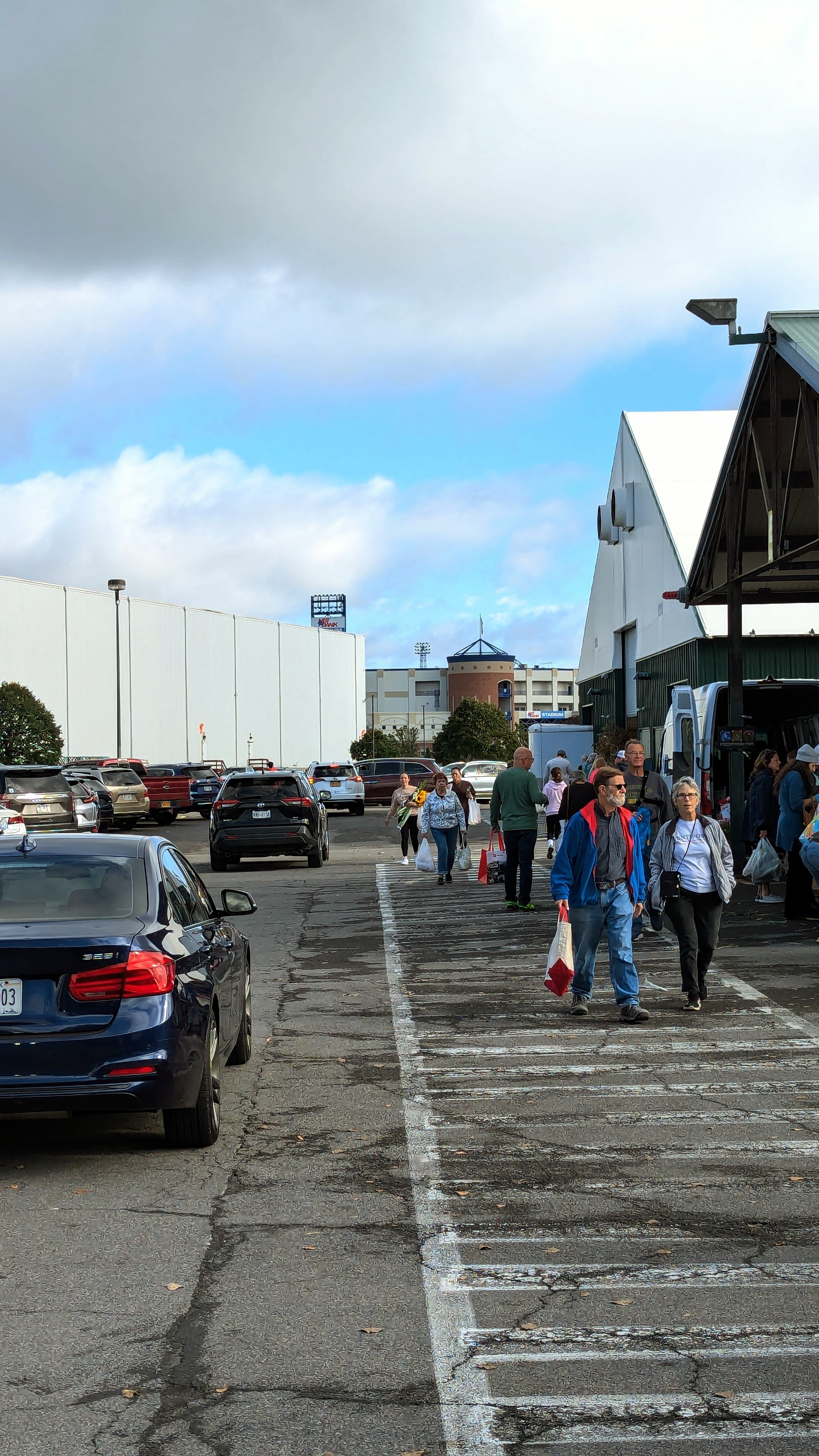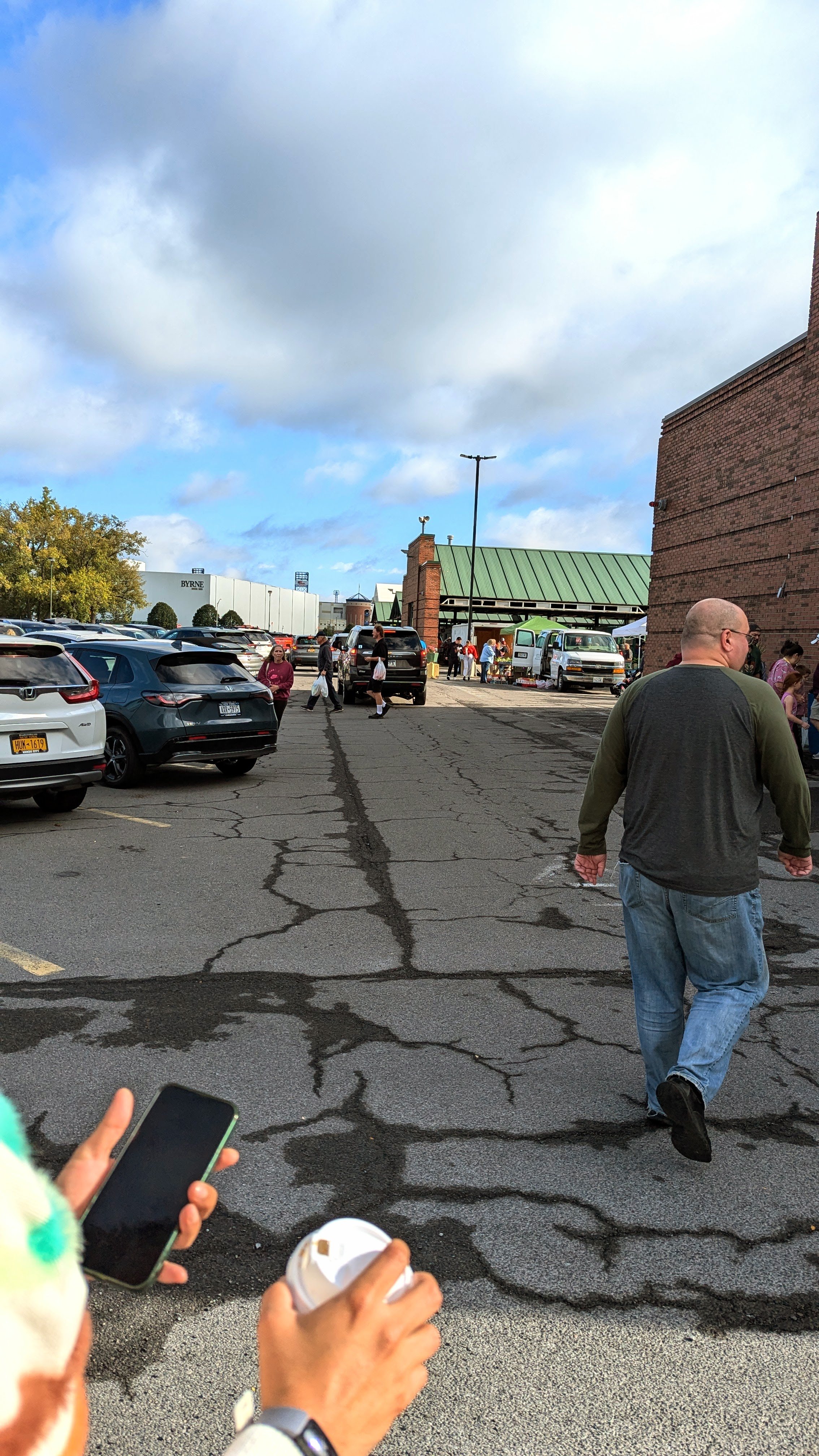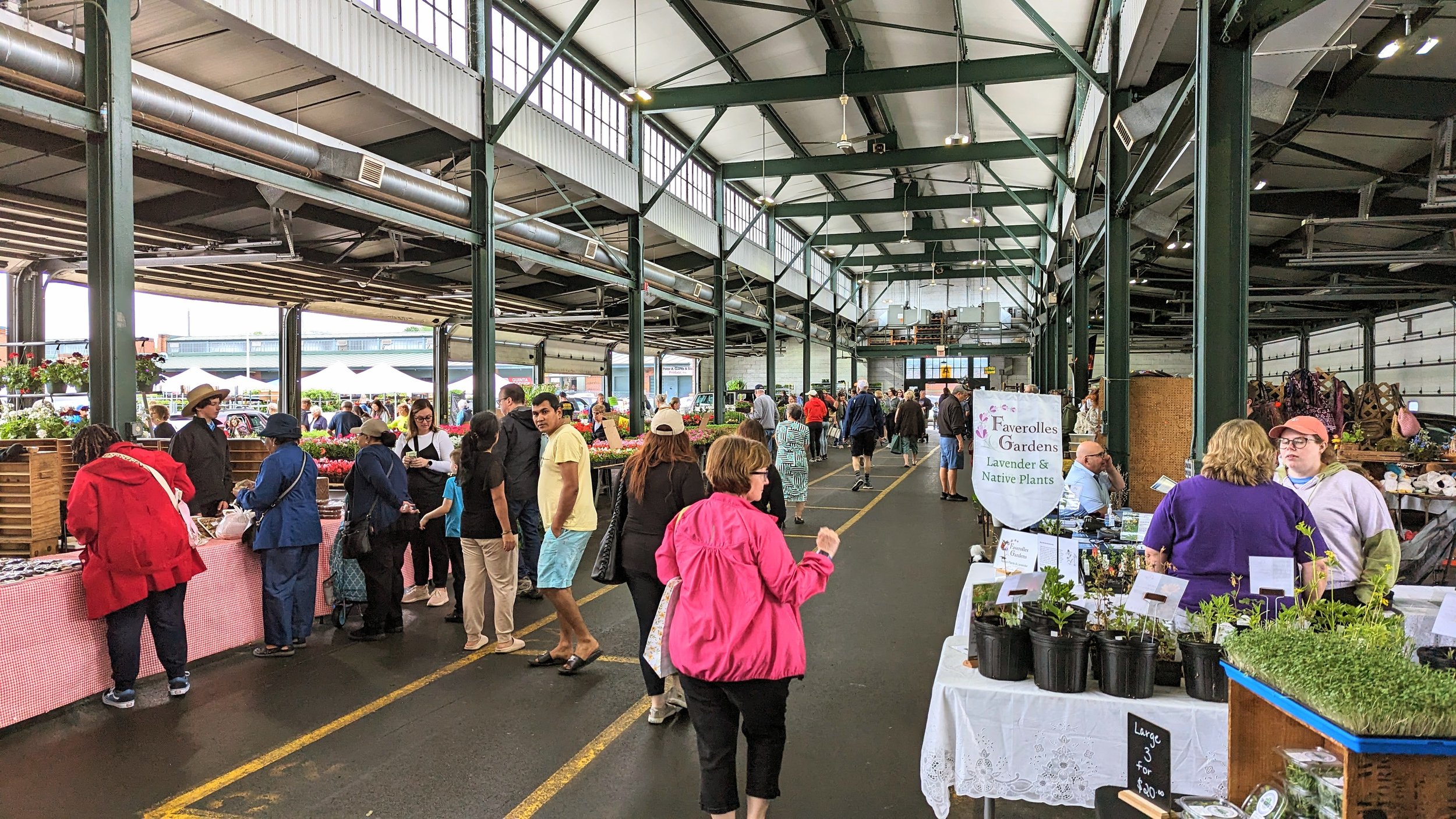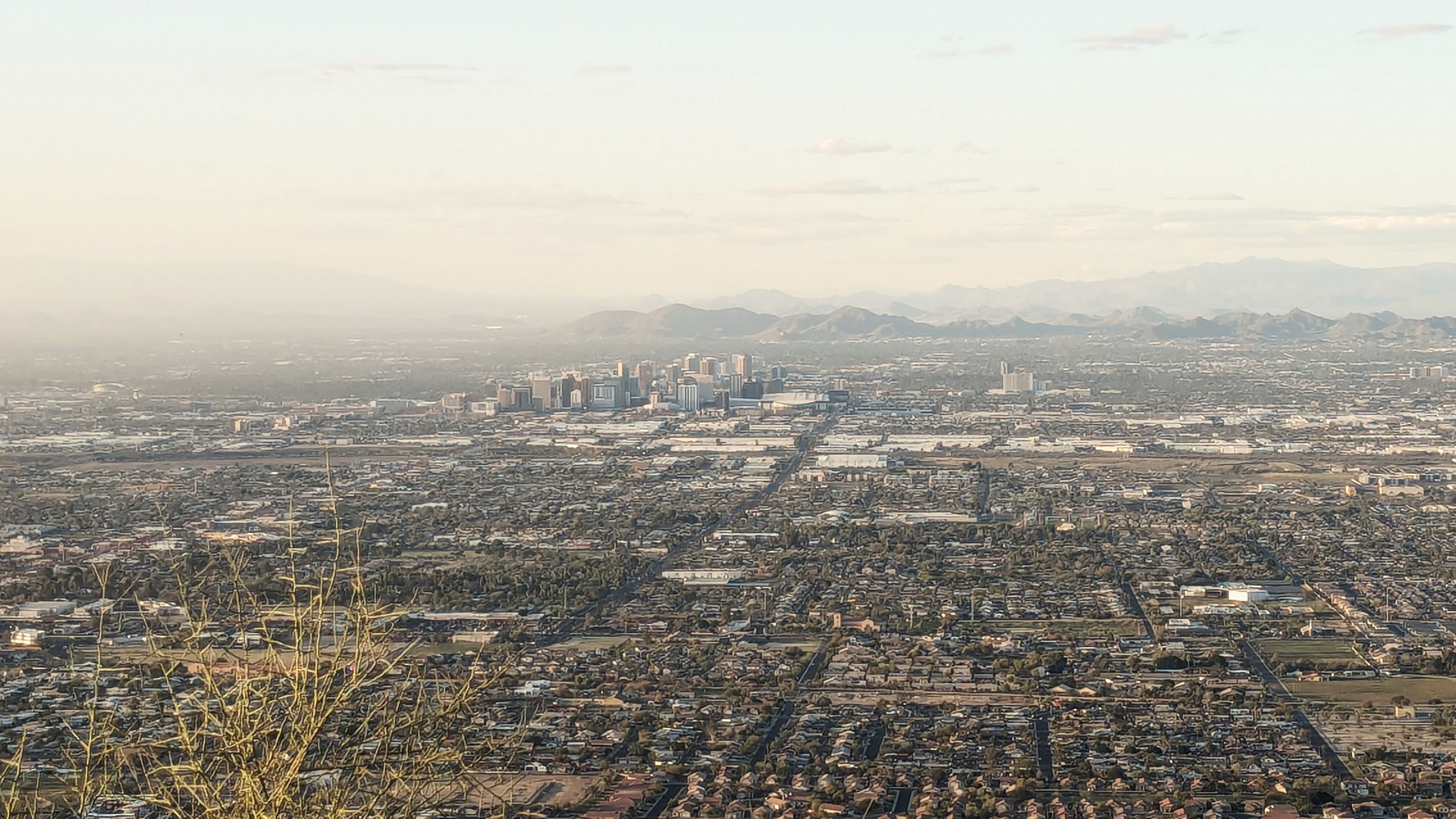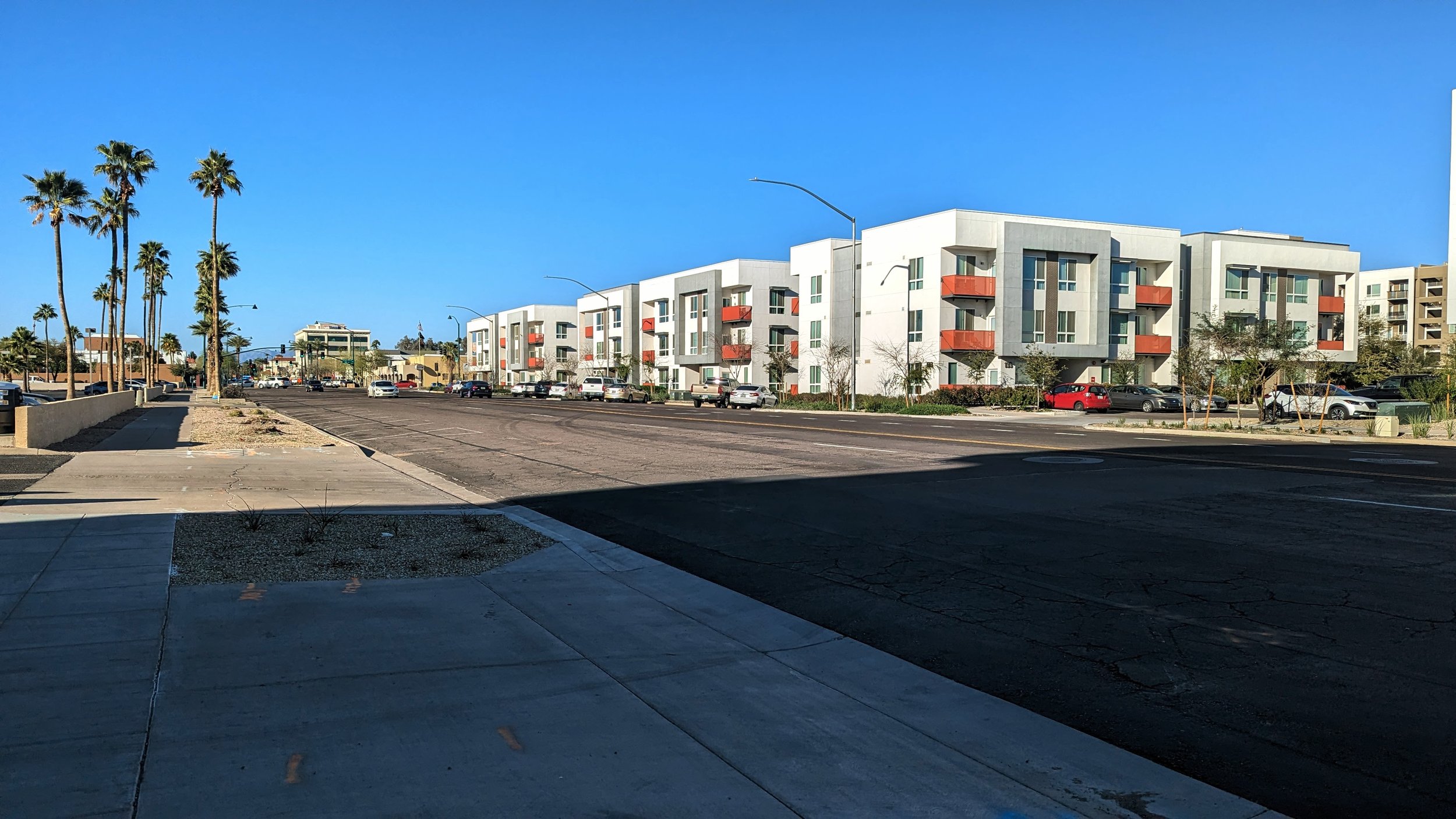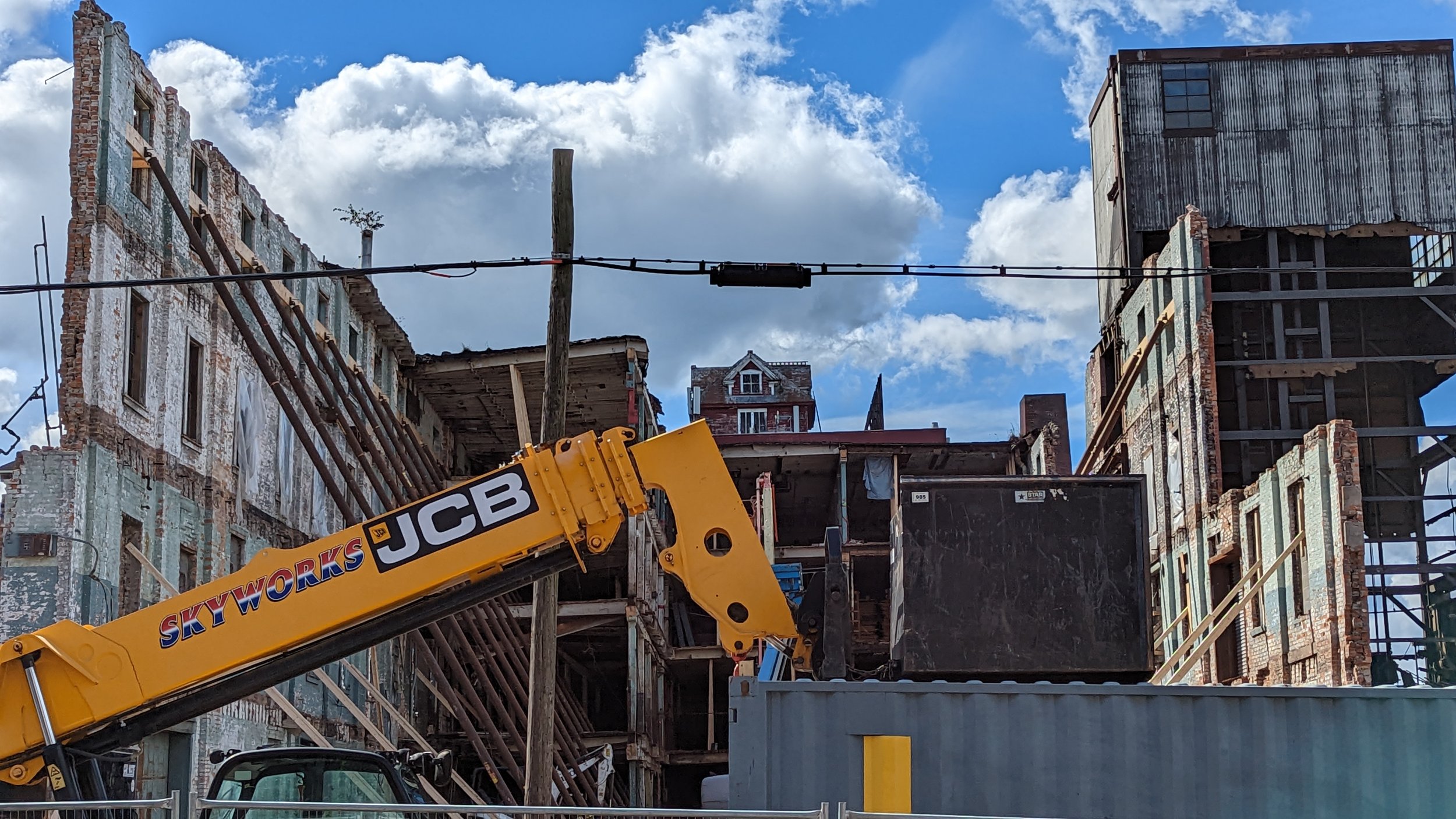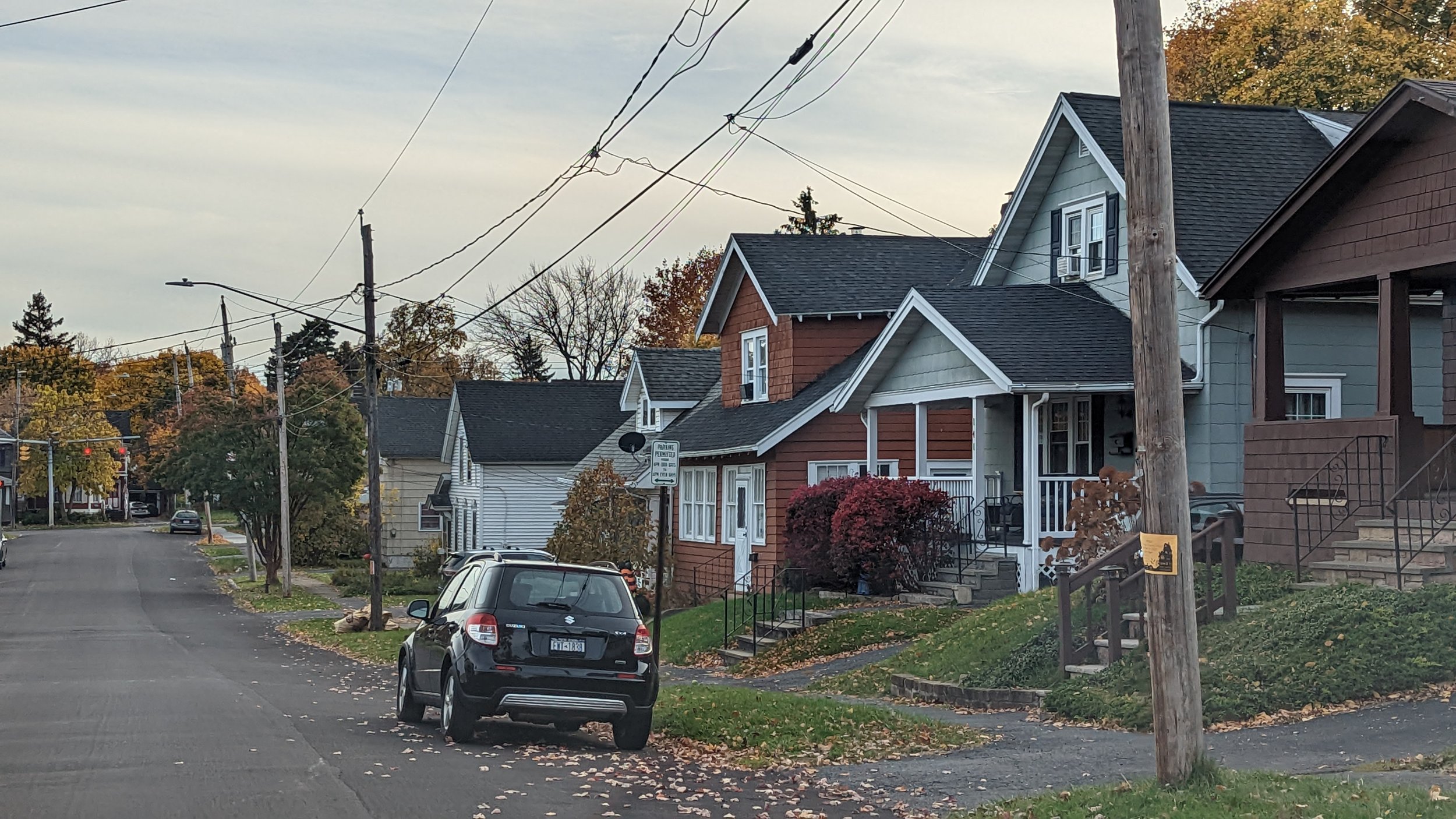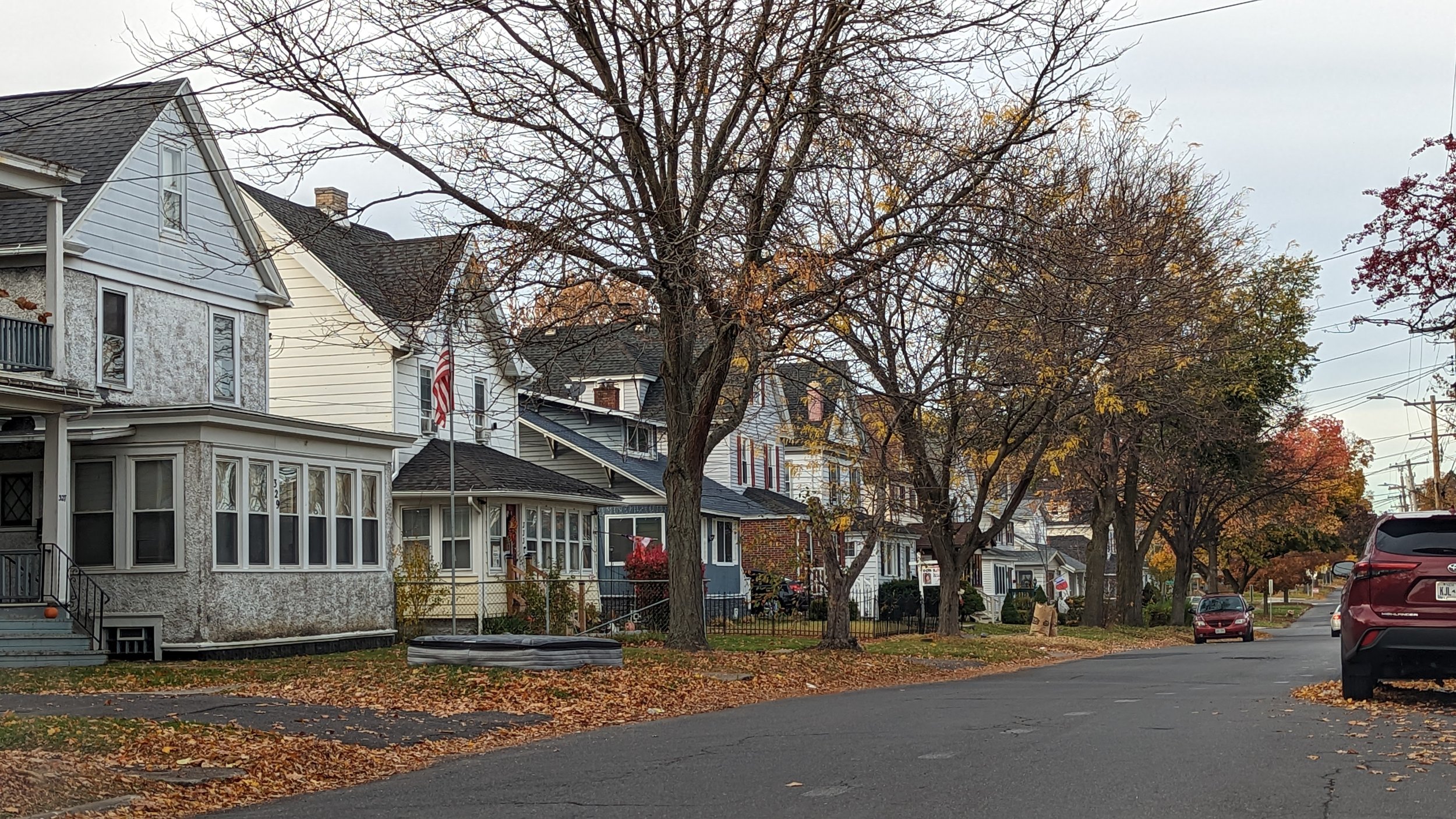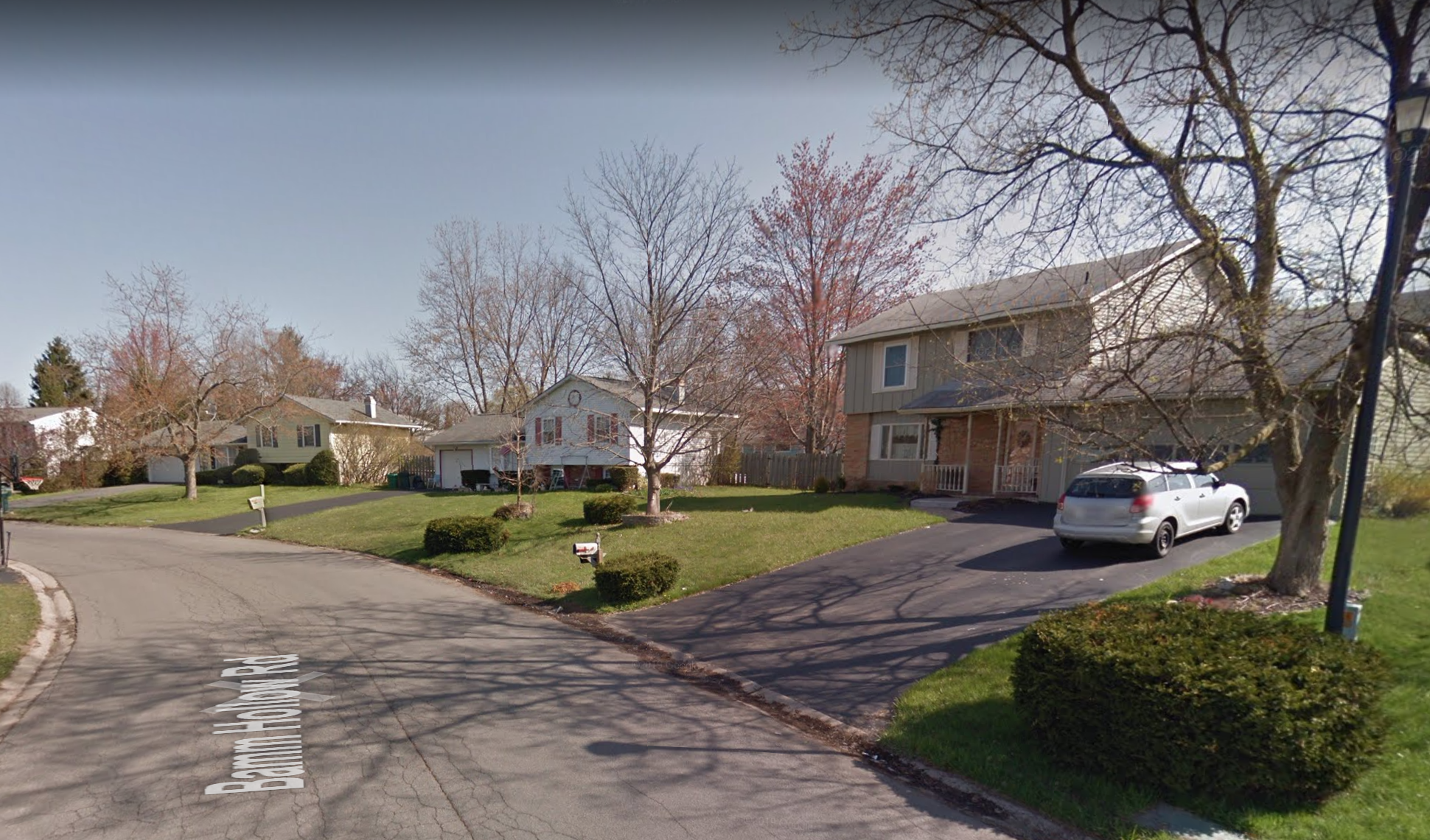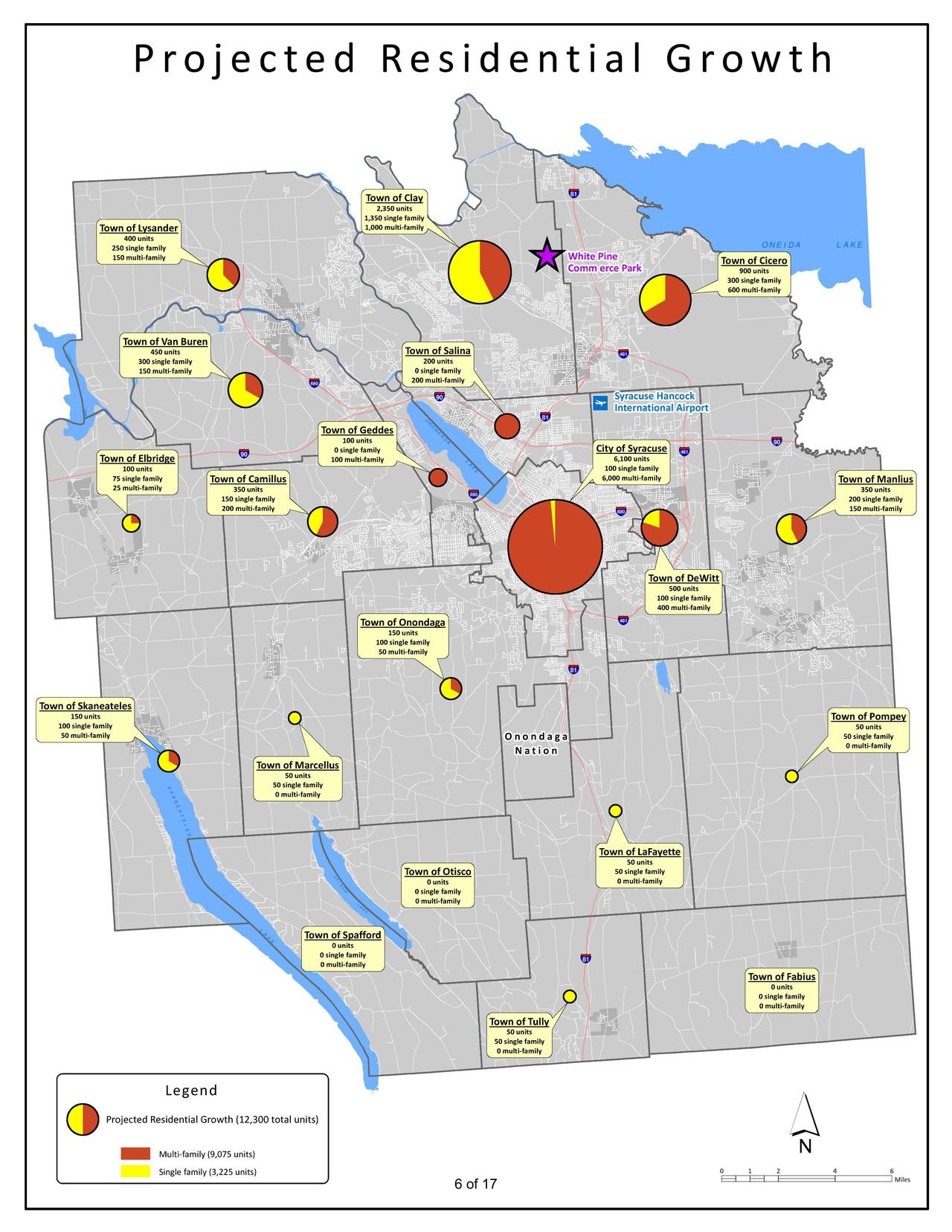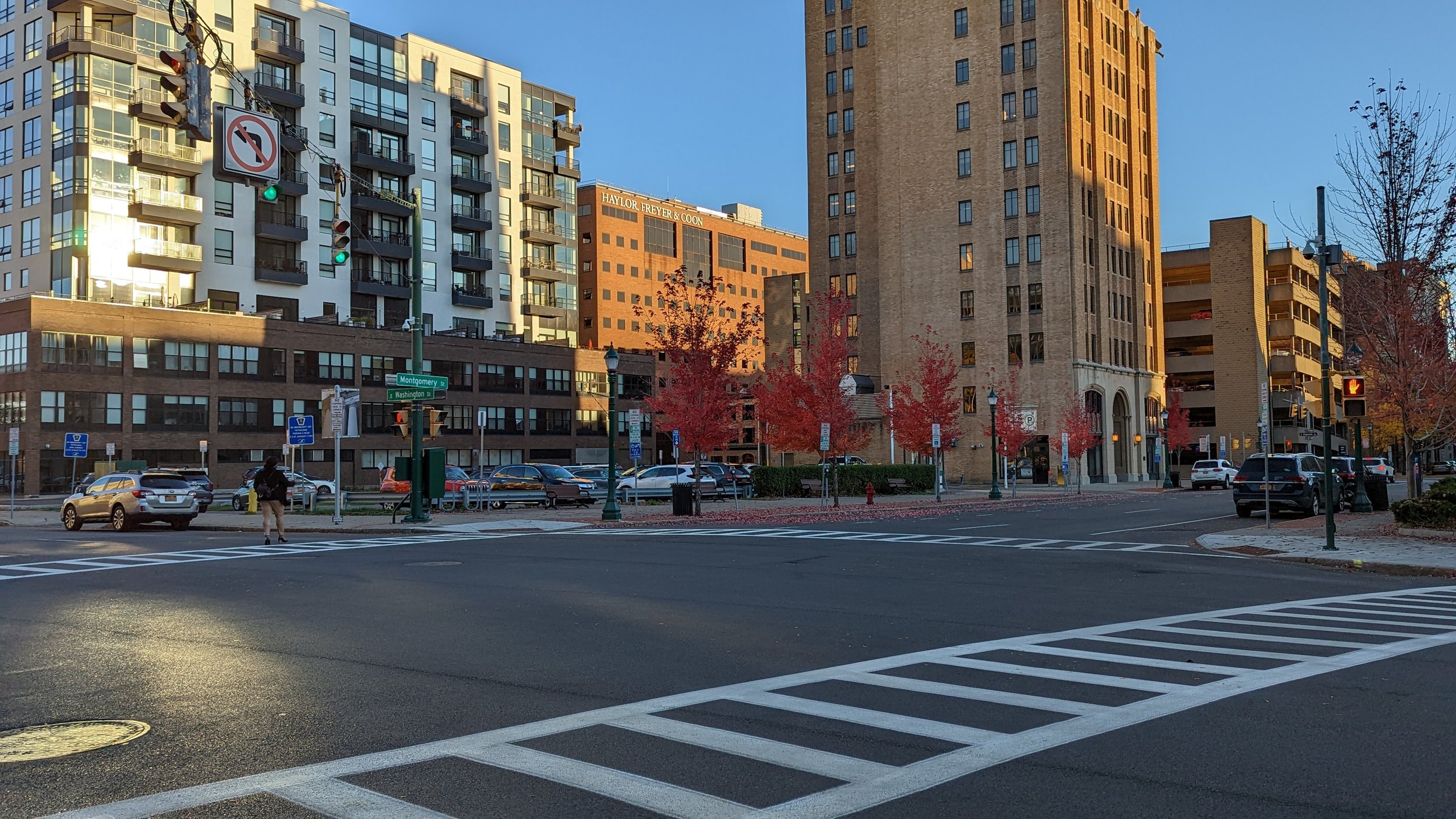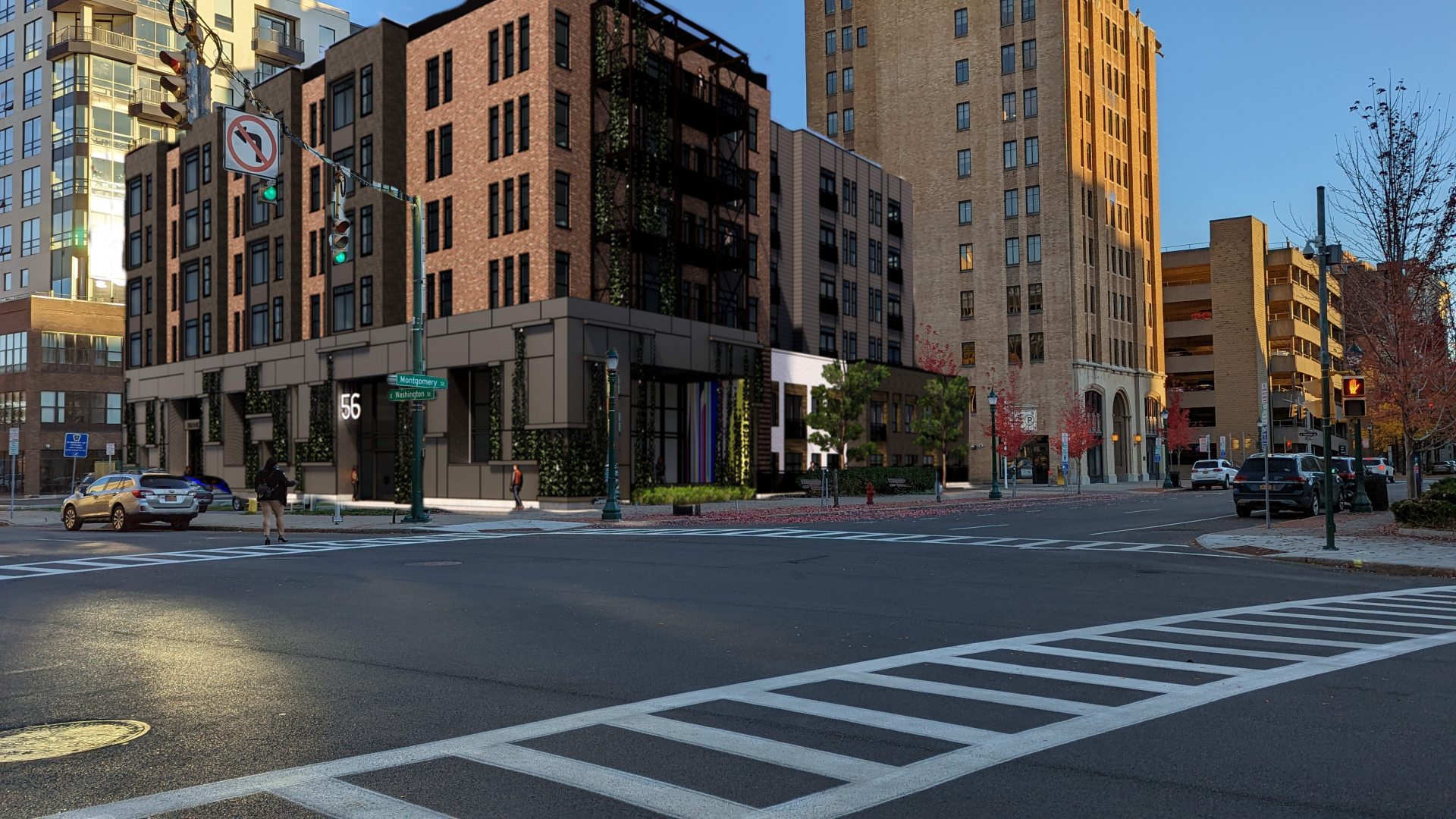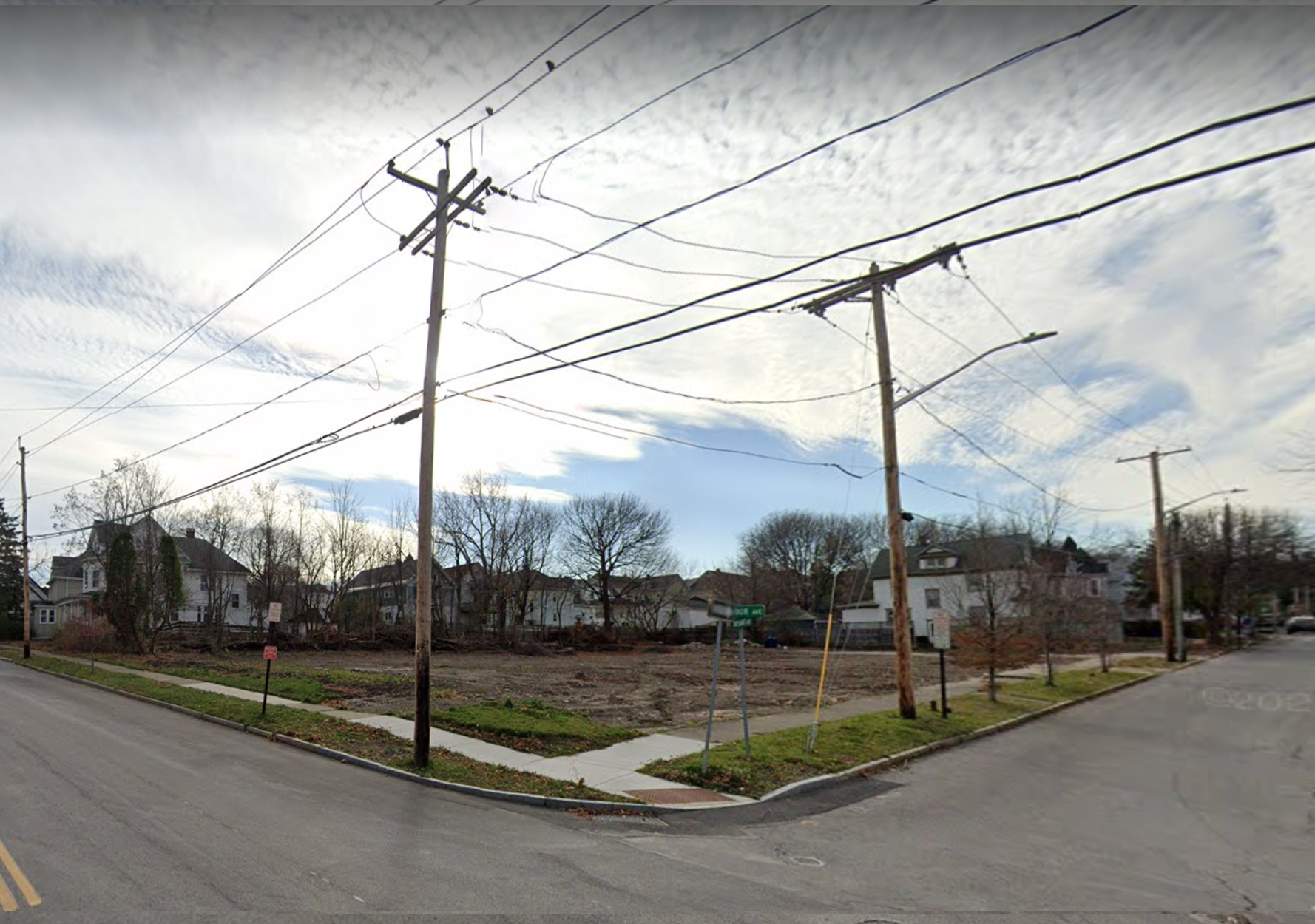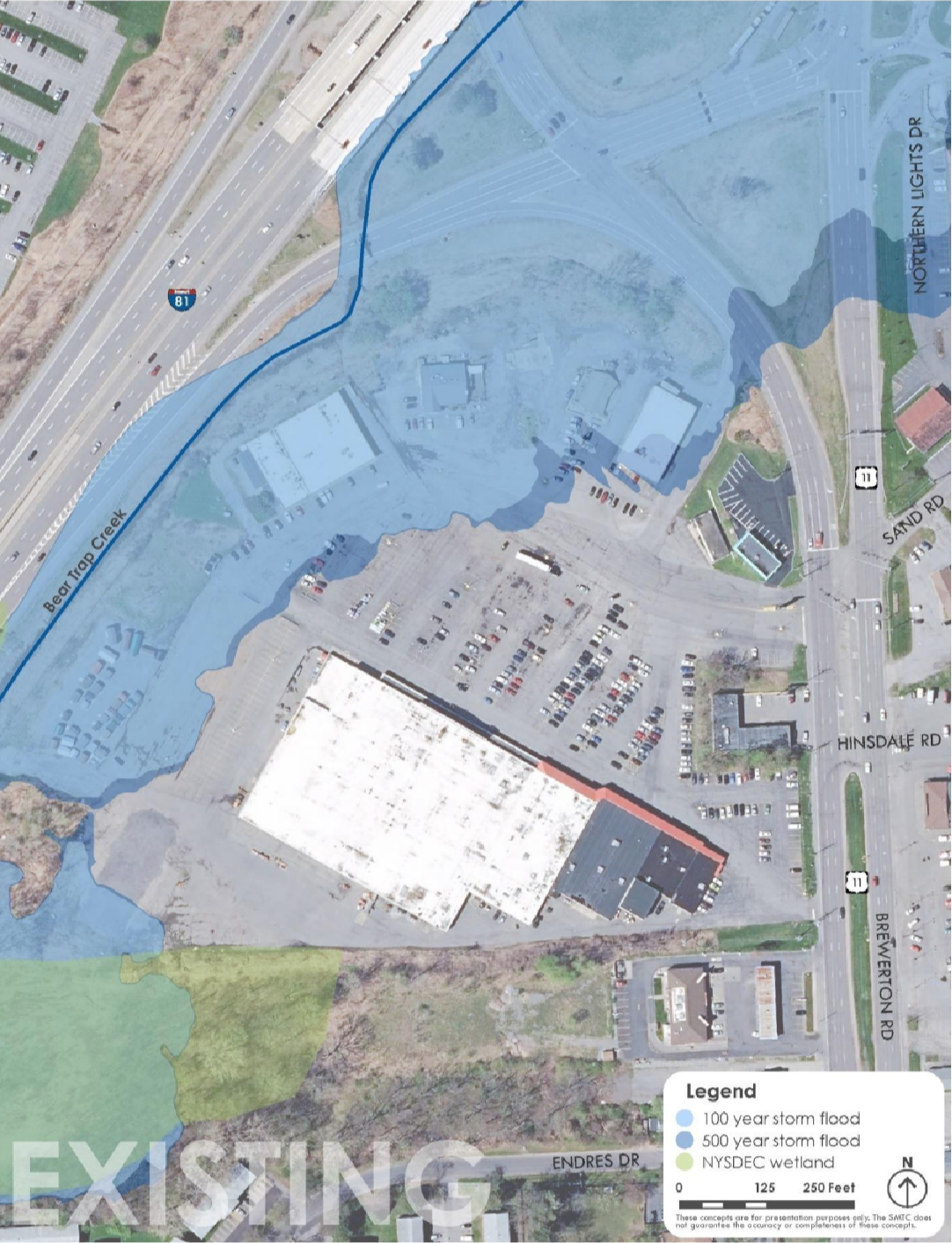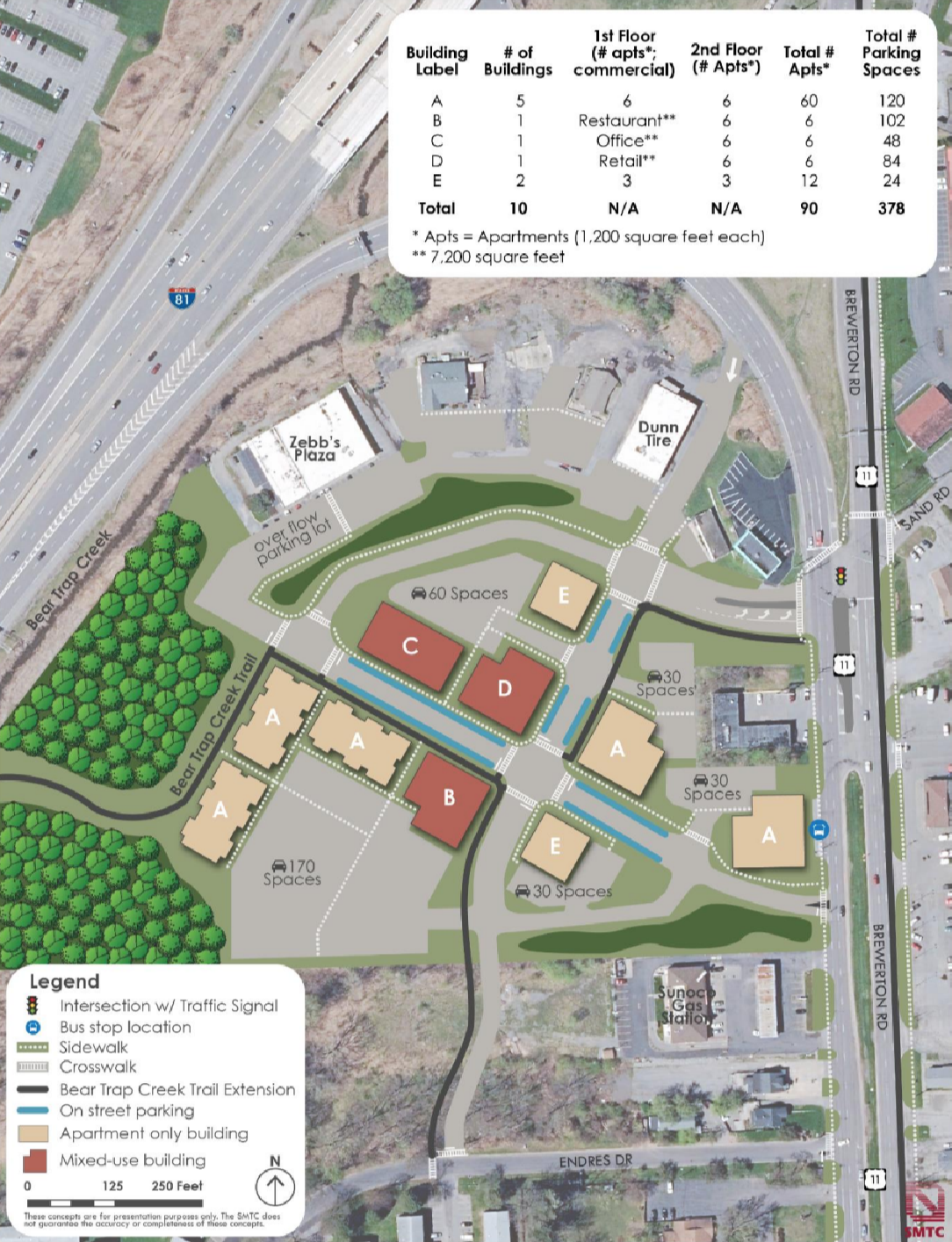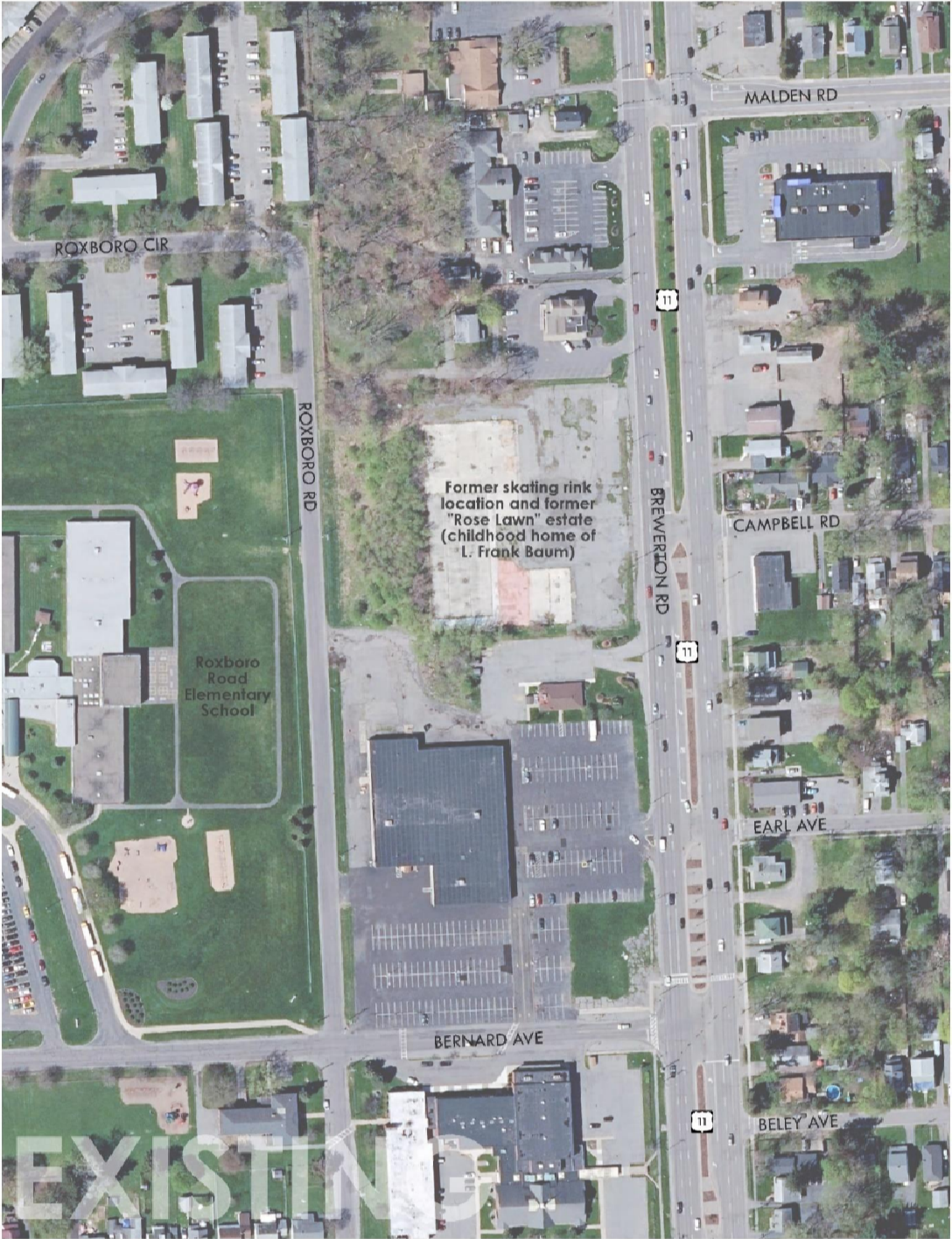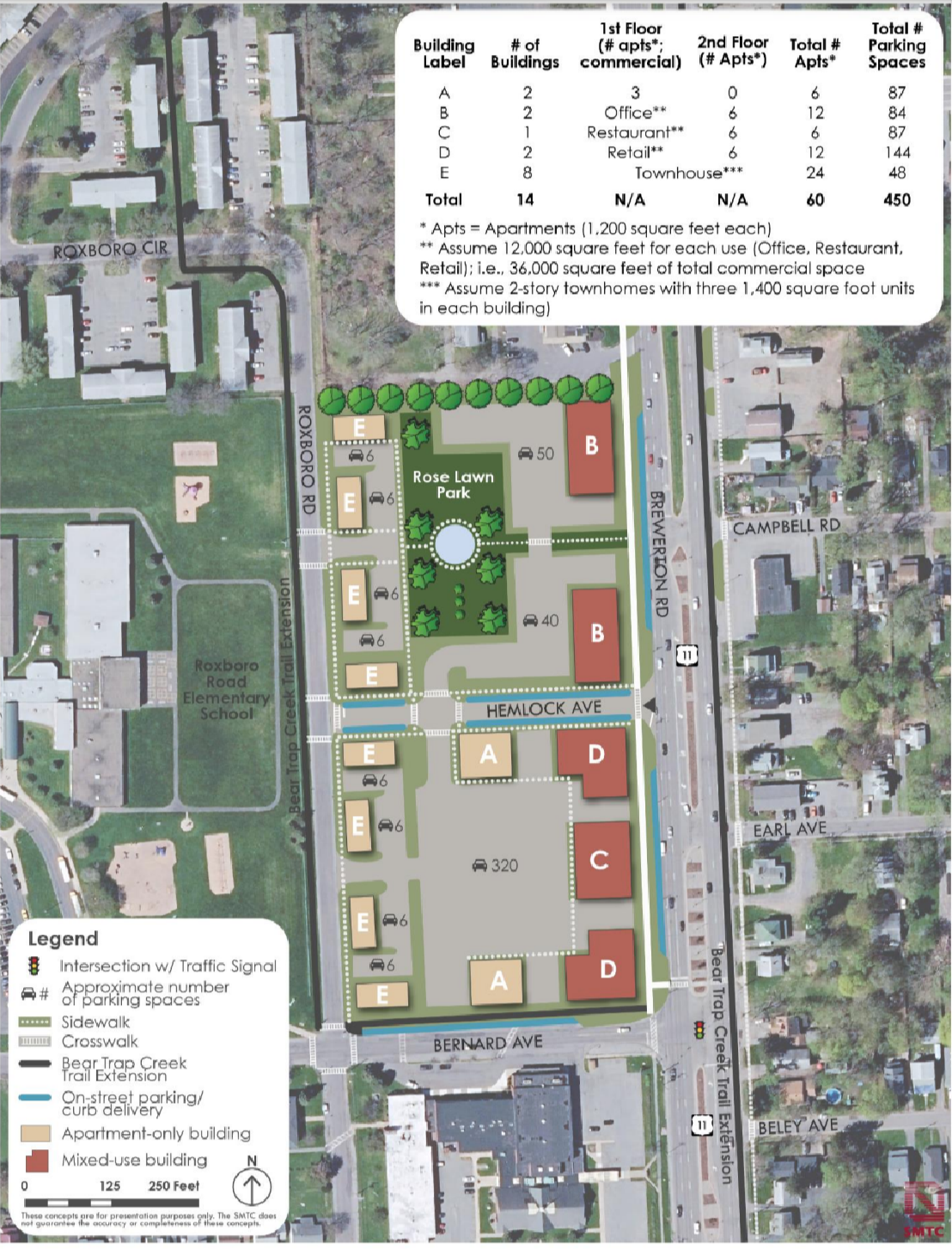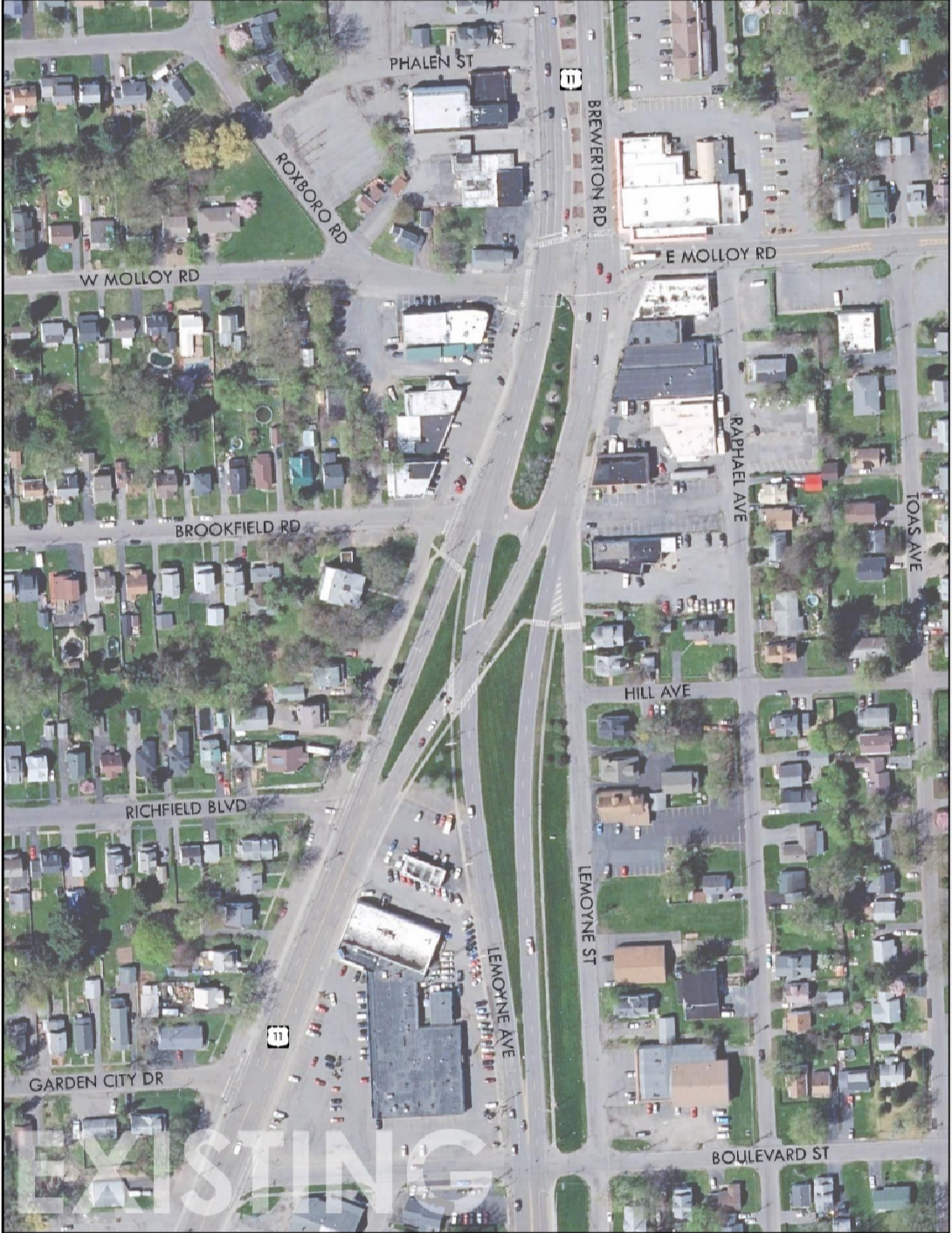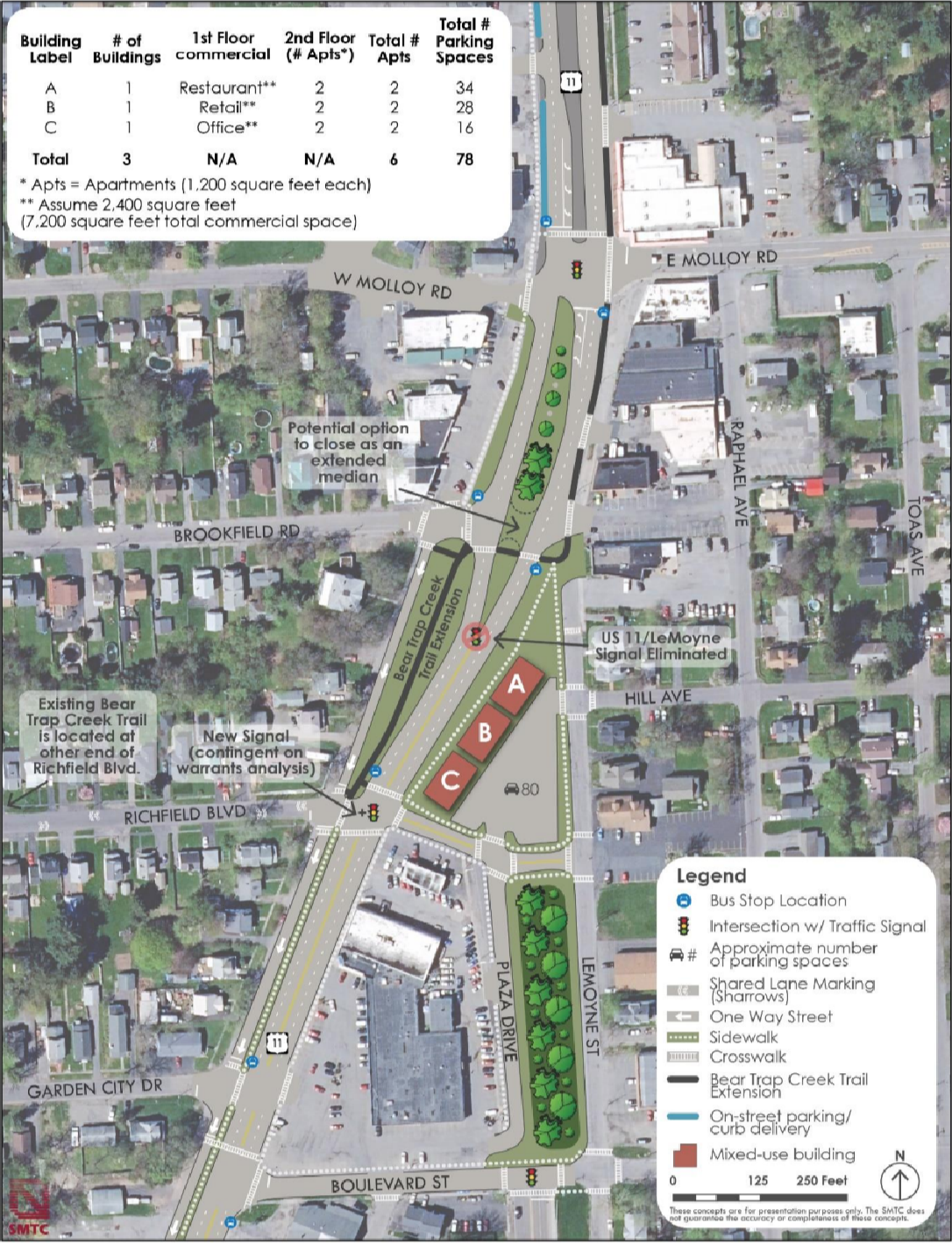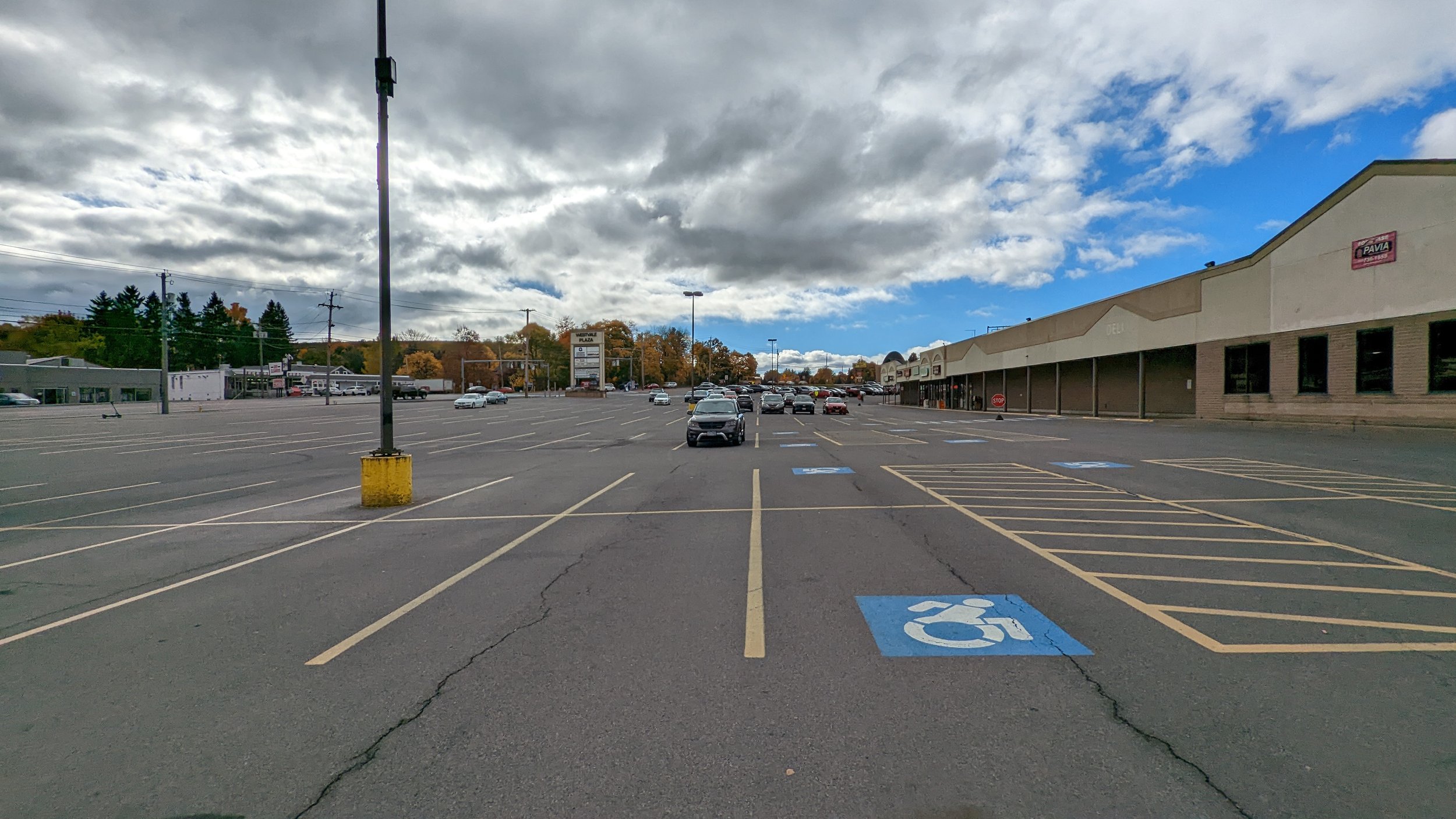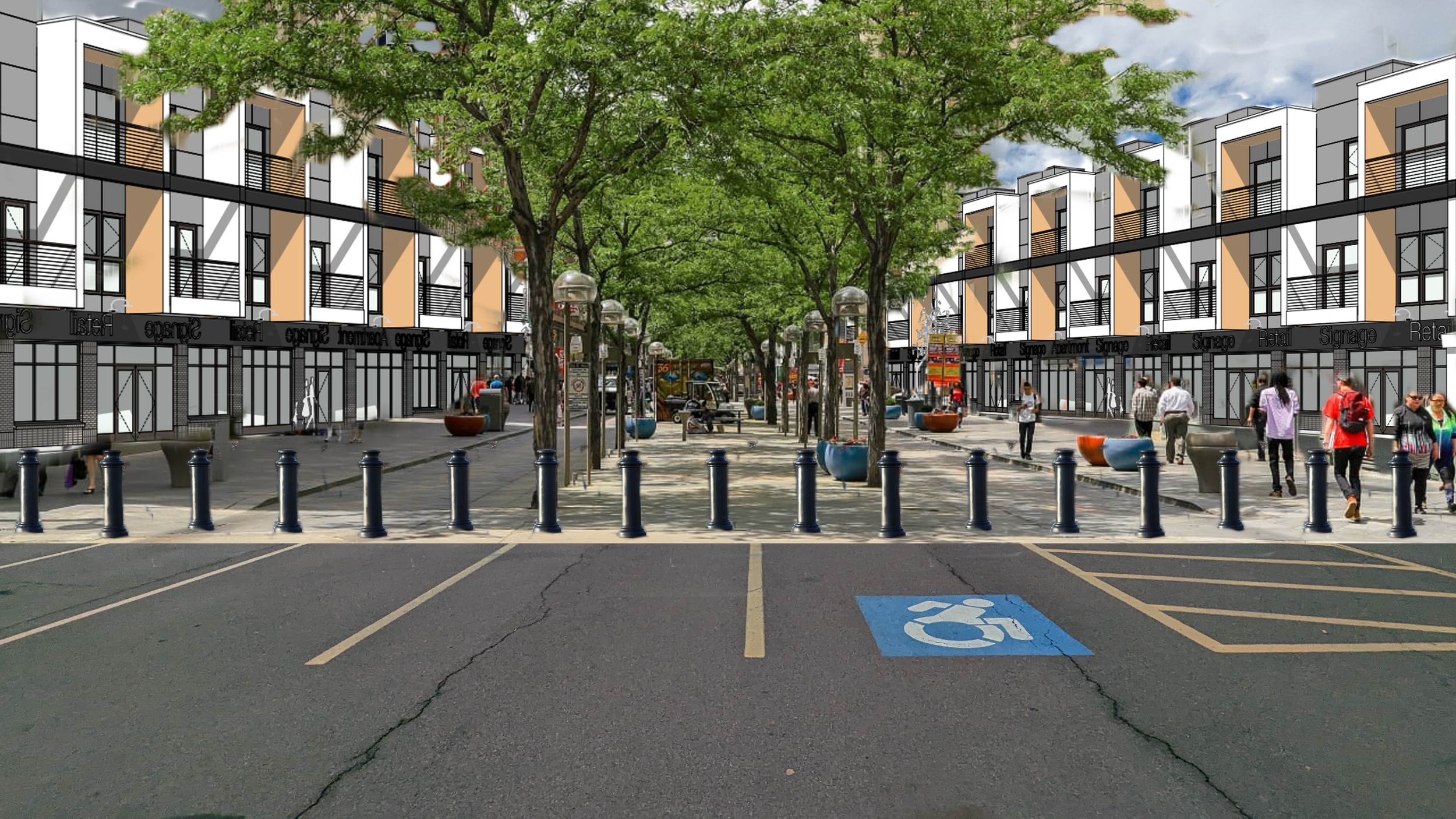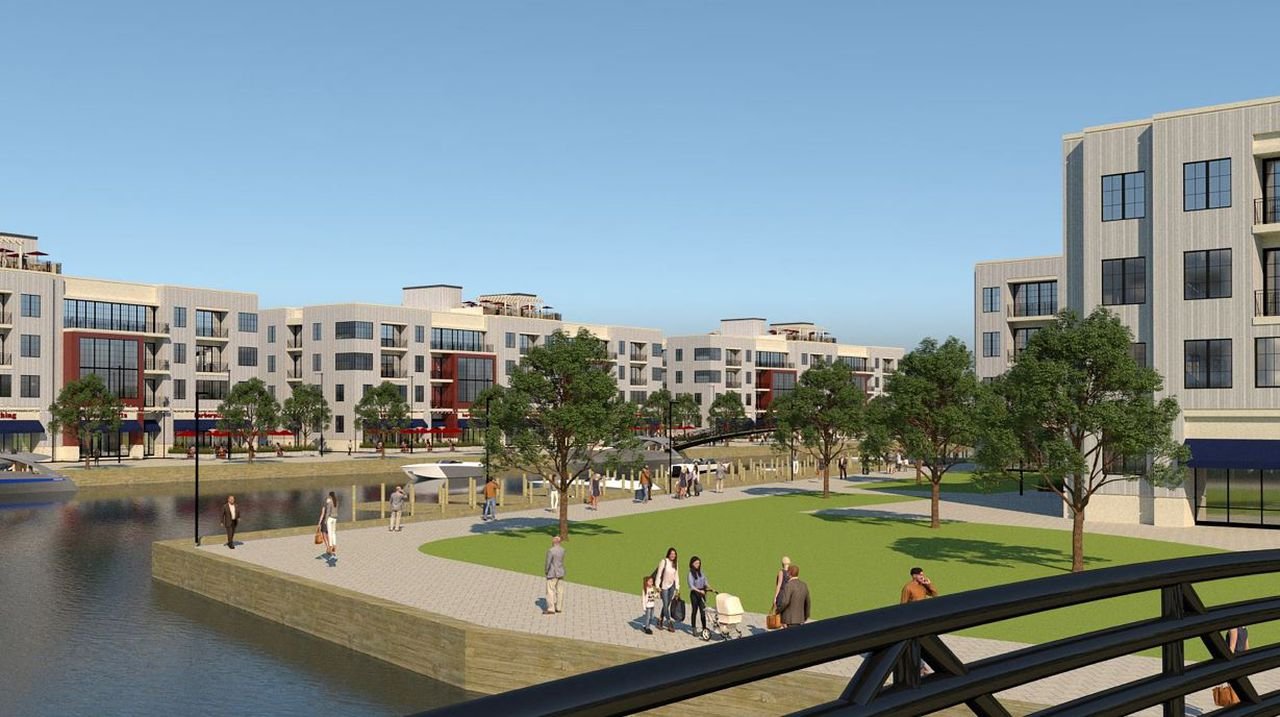Since 1938, the CNY Regional Market has called the City’s Northside home. Nestled between Park St and Hiawatha Blvd, the Regional Market has easy access to I-81 (soon to be Business Loop 81) and the Parkway, yet feels disconnected from the City neighborhoods that surround it. Traditionally an industrialized neighborhood, many of the industrial buildings that remain along Hiawatha Blvd are either underutilized or vacant and act as a barrier between the nearby residential neighborhoods. But it remains an essential anchor within the neighborhood and a regional attraction.
In 2023, the Regional Market released a $90 million plan aimed at addressing many of their long time maintenance needs as well as investing in new infrastructure that would help bring the facility into the modern era. While these repairs and investments are sorely needed, they were soon overshadowed by a State audit that revealed questionable financial practices by the individuals running the Market that have greatly jeopardized its future stability. As there is renewed focus on the Regional Market and concern for its future, let’s dig in to what what that future could look like.
The approximately 50 acres controlled by the Regional Market includes five “sheds” where vendors sell produce on Thursdays and Saturdays, as well as run a flea market on Sundays. Three larger warehouses, known as the Commission Houses, sit between the sheds and Hiawatha Blvd, while a strip of commercial buildings, the Market Commons, line Park St. The Commons includes Market Diner, an M&T Bank office, and a Wendy’s, with large vacant spaces currently available for lease. Additionally, the Market controls a vacant warehouse across Tex Simone Dr that sits just outside of the NBT Bank Stadium parking lot.
Surrounding all of these structures is asphalt. Acres and acres of asphalt with few dedicated spaces for pedestrians. In fact, the only sidewalks within the Market area line roughly 1,300 ft of Park St near the commercial buildings. Otherwise, pedestrians intermingle with vehicles as they circle the sheds either looking for a place to store their car, dropping/picking someone up, or picking up large purchases they may have made that day. For individuals who may have parked further afield, a shuttle provides an easy, accessible way into the Market, making stops outside of each shed.
The mural within the Market Diner illustrates an idealized walk from the Market to NBT Bank Stadium. Currently visitors are fenced in within the Market with poor pedestrian connections to the stadium area.
Lining the perimeter of the Market is a dilapidated chain link fence, further severing the grounds from its neighbors. And the Market has a lot of neighbors. The Regional Transportation Center (RTC), NBT Bank Stadium, Destiny USA, as well as one of the denser neighborhoods of the City of Syracuse all lie across the street from the Market, yet feel completely disconnected from it.
So what can we do to reconnect the Market with its neighbors and set it on a course for a healthier, livelier future?
First, let’s start by tearing down that fence. While there is a desire to control the space within the Market grounds, the existing fence fails to enclose the entirety of the property and sends a visual signal of disinterest in its neighbors. This is not to say a fence should not be part of the property, but only where absolutely necessary and it must be thoughtfully designed. Instead, it is encouraged to expand the Market’s facilities to include buildings that line Hiawatha Blvd and NBT Bank Pkwy, creating a barrier between the heart of the Market and the street, but in a way that welcomes visitors.


Now, these structures do not need to be market specific, but can bring in other uses that compliment the mission of the Market, including housing. New York State is in the midst of a housing crisis, as is the Greater Syracuse Area. With historic growth coming to Central New York as a result of the Micron investment, Syracuse is in need of more quality affordable housing. As a State sanctioned authority, the CNY Regional Market should be tapped as a resource to address this crisis. Not only would this address a need in our community, but it would also be good for the Market itself. Developing a mix of affordable and market rate apartments would provide a reliable source of income for the market as well as create a captive audience for their vendors to sell to. Food deserts are often discussed extensively in planning circles, and yet the Regional Market offers an opportunity for fresh food and produce oriented development (maybe not as catchy as transit oriented development, but still providing direct access to needed resources).
Gateway entrance to NBT Bank Stadium and the Regional Market at the corner of Hiawatha Blvd and Tex Simone Dr, as shown in the Hiawatha - Lodi Brownfield Opportunity Area plan.
The cornerstone of these new structures should be the vacant warehouse across Tex Simone Dr. Back in 2012, the brownfield opportunity area plan for Hiawatha Blvd saw this corner as an opportunity to create an appealing entrance to the market / ballpark district, including a large welcome sign that straddles Tex Simone Drive, announcing your entrance into a true destination. I support this vision, and I believe anchoring that corner with a large, mixed-use building, provides the best opportunity to truly transform how we view the entire district. Building off the success of the Hiawatha Heights Apartments next-door, which converted an old industrial building into residential lofts, the construction of a new, mixed-use building can help solidify the transition of the neighborhood away from its industrial past and into a modern, urban center.
In addition to the new mixed-use buildings lining the Market, improved pedestrian and bicycle connections will be sorely needed. Currently, the only sidewalk available on Hiawatha Blvd sits outside of the new CubeSmart self storage facility (not my favorite commercial property use, but better than a vacant building). Tex Simone Dr has no sidewalks to speak of. And NBT Bank Pkwy only has a sidewalk along its northern curb from Tex Simone Dr to the RTC. Pedestrian connections into the Market area are non-existent, while crossing any of the surrounding streets is a dangerous task. The first step to addressing these gaps is to fill them. Every curb should be lined with sidewalks, providing easy pedestrian access to all of the key anchor destinations in this area. Next, we must address the lack of safe crossing opportunities. In 2019, SMTC conducted a mobility study of the Market area that highlighted potential opportunities to narrow some of the surrounding roadways and improve crossings.This includes adding pedestrian islands at the Park St / Hiawatha Blvd intersection and bike lanes along Hiawatha Blvd. It’s encouraging to note that many of these changes are being pursued by the City of Syracuse in the coming years.
One thing the SMTC study does not address is the potential narrowing of NBT Bank Pkwy. The street, from curb to curb, has a typical width of around 50 ft with 4 travel lanes. With around 3,500 vehicles per day, this street is extremely overbuilt and encourages drivers to travel over the speed limit regularly. While turning lanes are needed at the Park St intersection, the majority of the street’s length can and should be reduced to one lane in each direction, with a turning lane into the RTC to assist the movement of buses. With this extra space, on-street parking can be implemented along with wider sidewalks and street trees. A mid-block crossing, with curb extensions, from the Market to the RTC should be implemented to improve connections for transit riders and travelers alike while slowing drivers through squeezing the roadway.
Now that we have addressed access around the Market, we should turn our attention to its interior and focus on improving the mobility of visitors along with the overall experience. This begins by restricting vehicle movements and expanding pedestrian spaces. First, we must remove the parking lanes that directly line the Market sheds. These spaces are highly coveted due to their close proximity to the vendors, but also encourage drivers to circle close to where most people are walking, creating conflicts and spewing exhaust right where people are mingling. Instead, these spaces should be converted to green spaces with sidewalks and trees. Some vehicle access will need to be maintained to allow vendors to access their stalls and for the Market shuttle to drop visitors off. Minimal access should be provided for customers. Some additional parking can be added in the far northeast corner, but a better option would be to utilize the parking lot at NBT Bank Stadium, while expanding the shuttle service for visitors in those lots. Syracuse Mets games typically start at 6:35pm, with gates open at 5:35pm. With the Market closing at 2pm, there should be no overlap in the use of the parking lots. The fewer parking spaces within the Market property, the more land that can be repurposed as park space.
One type of parking that should be included within the Market property is bike parking. Currently, the only bike parking available sits at the corner of Farmers Market Pl and Park St, a truly unpleasant place to be let alone leave your bike. Instead, the Market should consider providing indoor bike parking / lockers, as well as a large bike corral directly behind the Market Commons building that sits along Park St. It’s imperative to provide convenient, safe bike parking if you hope to encourage more people to ride to the Market.
As we look at the uses inside the Market grounds, we should take some inspiration from the revitalization plans that were released last year (and are currently removed from their website). The plans called for the redevelopment of the Commission Houses into a food hall, similar to the Salt City Market in Downtown Syracuse. While this is an intriguing idea, a food hall may be better positioned at a location along the edge of the property, providing easier access throughout the week. This could occupy one of the larger empty spaces in the Market Commons building, or even the first floor of any new development at the vacant warehouse on Tex Simone Dr.
Market Commons would benefit from more dining options, and potentially a sports bar that ties itself into the local sports history of the ballpark down the street. As I’ve mentioned in previous posts, there are no good dining and drinking options near the ballpark, which prevents fans from lingering in the neighborhood before or after a ballgame. Finding ways to tie the ballpark closer to the Regional Market is key to the future of the district. This may include working with the Syracuse Mets to hold more afternoon games, perhaps even calling them Market Days, to tie into the energy of both community anchors.
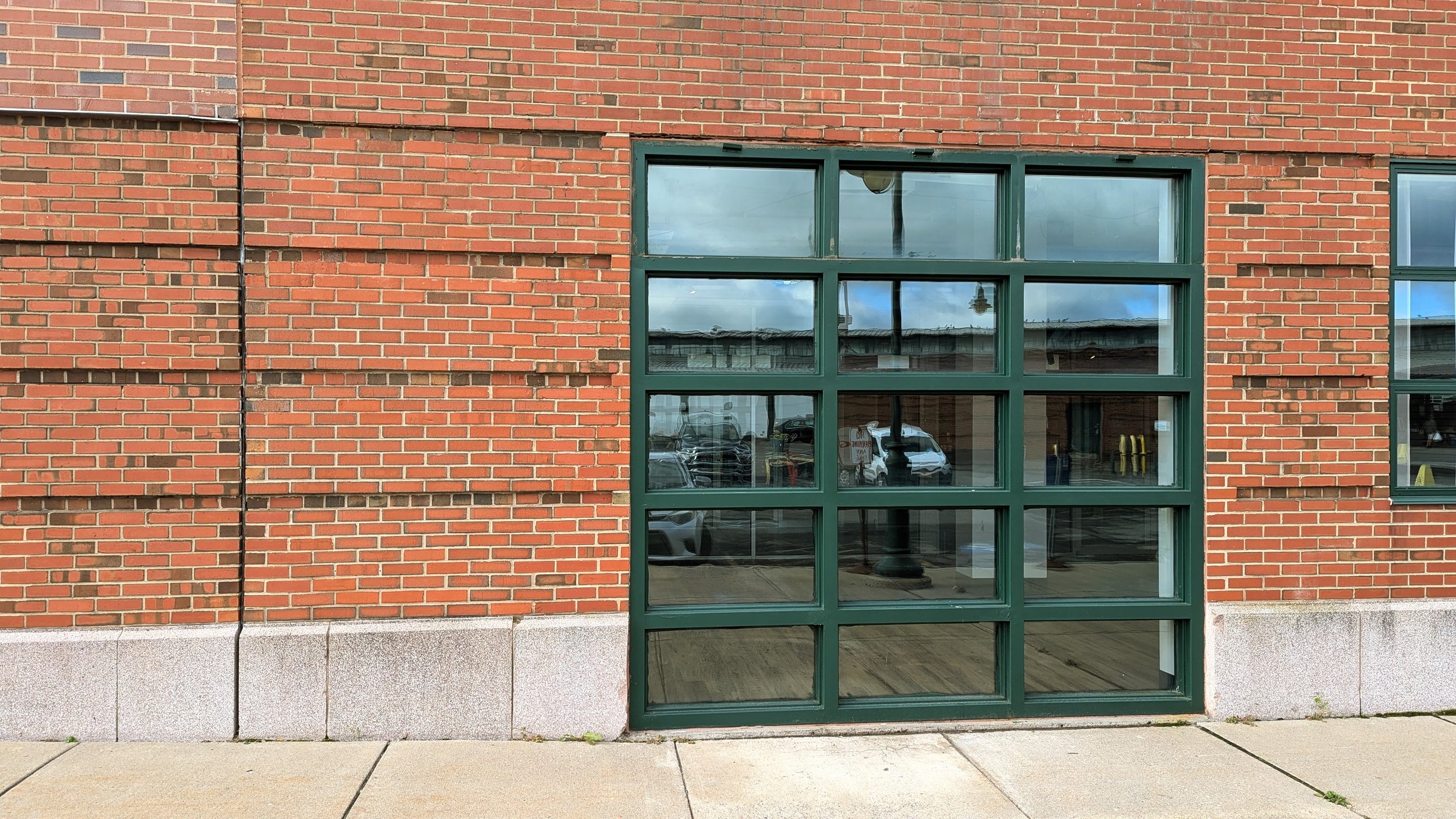

At its heart, we must improve the areas used by vendors, including providing more space for refrigeration and electrical hookups. These are functional items that vendors have expressed a need for and that more modern markets are providing. If this requires the demolition of some of the older structures, we should be open to that, as long as their replacements offer the better amenities and functionality. We should preserve as much of the historic structures as possible, but we should not let their histories prevent us from creating a more functional market space for vendors and visitors.
The Market area, and the greater Northside neighborhood in which it sits, has a lot of potential. From the Market and the RTC to the ballpark and Destiny USA, so many of our regional assets sit close together, yet feel completely disconnected from one another. As we have discussions surrounding the future of the Market, it’s the perfect time to dream big and create a true destination on the Northside.
An active market day, despite the rain in May.












